Banning and burning books makes for colorful spectacles to which the notion of rationality vis-à-vis free expression falls casualty.
December 25 is a date with sacred value for the Dalit community in India, as it is so for Christian communities all over the world. On December 25, 1927, Baba Sahab Bhim Rao Ambedkar led the congregation of Dalits to participate in the Manu Smruti Dahan (burning of the book of Manu). The date is also associated with the birth of Jesus Christ in the Christian mythology. But then, the date is no longer a mere temporal canvas for the historical and mythological events. It is a date of market driven spectacles, no less sacred, in a consumer society.
The ancient Manu Smruti, also known as the “Laws of Manu” or Manav Dharmashashtra, became known to the world at large after Sir William Jones translated the text in 1794. It was a book, which determined the social structure in ancient India, dividing different strata along the lines of social status ascribed by birth. Therefore, it advocated structural inequality stratifying castes, sex, gender, and other such indices.
In the 20th century, with the advent of the modern-rational engagement with the text of Manu Smruti, there surfaced a realization that the pre-modern text was condemnable for its advocacy of the structural inequalities. Ambedkar, trained in the system of modern-rational thinking, with a doctoral thesis on caste structure in India, understood the unjust injunctions of Manu. He deemed it fit to publicly burn the book and send a strong message in the colonial India: caste inequalities, and thereby atrocities and injustices, are not acceptable in the modern outlook.
As a symbolic gesture, the burning of the book registered a mark in the long drawn protest against Brahmanic dominance, caste-discriminations and prejudices, and religious (Hindu) support to the structural inequalities.
Imagined Rationalities
It was an interesting coincidence that the day of burning of the book was also the day when, according to the Christian folklore, Jesus was born. Even though there are disagreements about the exact day of the birth of Jesus in the Christian theology, it is a day of sacred significance in the lives of the believers. It marks a beginning of the new possibilities, of redemption, of fulfillment, and of a utopian age. But then, this day like any other day of consumerist celebration is not devoid of the market-interventions. Both, the burning of the book of Manu and the birth of Jesus, acquires sheen of an icon, commodified and coded with illusionary meanings.
This is not to suggest that the act of burning of a book, or the birth of Jesus Christ, were irrational and meaningless. They were powerful instances in the history and mythology of humankind. They were real in their goals and significance. The burning of the book by the Dalit under the self-conscious leadership of Ambedkar was an immensely powerful act of protest against the real issue of caste discrimination.
Every nation loves, seemingly, its own share of spectacles. The post-independent Pakistan did try to get it as early as possible by sending Sadat Hasan Manto, one of the progressive writers, on trial on the charges of obscenity.
The imagined rationalities in these instances give succor to an imagined emancipatory social order. These rationalities are supposed to give birth to debates, deliberations, and critical reasoning and not merely spectacles of intolerance. Only could the public debates enable to cognize the possibilities and constraints with the imagined, and other variation of competing as well as conflicting, rationalities. Arguably, the mediated manifestations of the spectacles disable a chance of debate on the imagined rationalities. They only serve our interest as consumers of icons, spectacles, and sensation, as if they were the components of a veritable Disneyland.
This explanation receives a bit of peppy complexity in the context of India in particular and South Asia in general. This is due to the selective celebration and eclectic denunciation of burning, banning and banishing. It means that we can hail one instance of burning while we have to lament the other.
For example, we celebrate an act of book burning by Ambedkar as a progressive act but we have to condemn another act of similar kind if it were performed by a Mumbai based nativist organization like Shiv Sena. Arguably, thus, the spectacle of intolerance in South Asia has its own uniqueness with vested political and industrial interests. The uniqueness could be hastily attributed to the chequered historical experience, colonial encounter, rise of capitalism and modernity in a qualitative different way than in the other parts of the world. But the uniqueness also relates to the exemplary intolerance to pluralism of rationalities, underpinning the acts of burning, banning and banishing.
Spectacular Intolerance
Every nation loves, seemingly, its own share of spectacles. The post-independent Pakistan did try to get it as early as possible by sending Sadat Hasan Manto, one of the progressive writers, on trial on the charges of obscenity. Manto died after his fifth trial and was buried with unresolved agonies of a candid writer that he was, who mirrored the ugliness of the social face in unabashedly critical stories like Thanda Gosht (Cold Meat), Bu (The Smell) and Khol Do (Open it).
Curiously enough, Manto was a source of discomfort, and intolerance, for many of his peers from the circle of progressive writers in India as well as in Pakistan. Ismat Chugtai, a compatriot of Manto, renowned for her magnum opus Lihaaf (The Quilt), too went through a similar trial for her candor in depicting female body and alluding to homosexuality. And the legacy continues, as Manto and Chugtai are celebrated as the legendary contributors in the modern vernacular literature in South Asia.
The spectacle of intolerance assumes greater velocity when the target is not homebound. How spectacular was the banning of The Satanic Verses, of Salman Rushdie? By 1988 most of the countries, with a prolonged history of colonialism joined in banning the book. Pakistan, Bangladesh, Sri Lanka, India, and even South Africa, were among the comity of nations that denounced the book to protect the Prophet from a blasphemous attempt and the vulnerable religious sentiments of the Islamic communities.
Ayatollah Khomeini, the religious leader from Iran, issued a fatwah in 1989, a religious edict according to the Islamic social law to violently prohibit blasphemy, inviting the believers to kill Rushdie and the publisher of the book. This was followed by melodramatic turns of events, including more fatwahs, protest in support of the fatwahs as well as against the infringement on the freedom of expression, and a modest apology by Rushdie, and so on and so forth.
The immediate outcome, other than melodramatic sequence of events and spectacles for the consumption of masses, was a whopping sale of the book in the countries where the book was not banned. Yes, it serves the consumers of spectacles in both ways, consumption of the spectacular banning and the banned object.
To include a few more instances, Rohinton Mistry’s Such a Long Journey was dropped from the syllabus by the Bombay University following a protest by the students affiliated with Shiv Sena, a Maharashtra (India) based vigilante political group, on the ground that the novel presented Bombay in bad light. Interestingly enough, the notorious nativist vigilante group and the self-proclaimed cosmopolitan Congress party were hand in glove behind burning Rushdie’s The Moor’s Last Sigh in 1995. The stated reason was that the novel caricatured Bala Thackeray, the Sena chieftain, as well as Jawaharlal Nehru, the first prime minister of India, in bad taste. There must be a special reason why R. K. Laxman was spared for drawing the nose of Indira Gandhi in his cartoons, a little longer and spiky, right when Mrs. Gandhi was the presiding deity in Indian politics.
It is obvious that the intolerance to the books, leading to vandalistic burning, banning and banishing is premised upon one or other notion of rationality, religious as well as secular.
Jokes aside, the book banishing continues and hence A. K. Ramanujan’s Ramayan was dropped from the syllabus in the Delhi University and Wendy Doniger’s Alternative History of Hinduism ran into trouble. The political right considers Ramanujan’s fundamental idea of “multiple Ramayan” a threat to the sacredness of the “singular epic” and a hence upsetting the communal sentiments. On the other hand the intolerant Hindu right does not find Doniger’s book subscribing to the idea of one monolithic version of Hinduism.
It is obvious that the intolerance to the books, leading to vandalistic burning, banning and banishing is premised upon one or other notion of rationality, religious as well as secular. However, they are concealed under the sheen of spectacle, thereof overriding emotion, that each instance of intolerance yields. The ordinary consumers of the spectacles seldom reason with the rationales behind the acts of intolerance. Does one ever go beyond the immediate expression of anger and intolerance, and ask about the nature and scope of the rationality underpinning those actions?
Ordinary and Everyday
There are umpteen instances of banning that are taken for granted. They are primarily under the category of “official censorship”, driven by nearly unquestionable rationality. Seemingly non-issues, notwithstanding, they are no less significant. Be it the banning of YouTube and Facebook in Bangladesh or the killing of the Buddhist monk for showing a picture of a burnt Quran in Bangladesh, they all allude to the rationale behind the intolerance: no jokes about Prophet and the holy book!
Kiran Desai, author of The Inheritance of Loss, came closer to winning an opportunity to get her book burned in Nepal on the charge of depicting the Nepalese in an unfair manner in her novel. They may not be as spectacular as the other instances of intolerance. They, however, reveal aspirations in a consumer society: to have one of its own. And they also underline our disability of reasoning with the rationales behind the acts of intolerance.
In this regard, not least important is the outrage in India over the cartoon in the political science textbook for the eleventh standard class. The drawing, originally made by a renowned cartoonist Shankar during the initial years of independent India, showed the Prime Minister Nehru and B. R. Ambedkar riding a slowly moving tortoise, named Constitution of India. The usage of the cartoon, which depicted the sluggish framing of the constitution, was well neigh in sync with the new paradigm of curriculum and teaching, according to the National Curriculum Framework-2005.
The latter gave a mandate to the idea of teaching with the help of various means other than the conventional text.
The militant Dalit activists attacked the advisor for the textbook, Suhas Pulshikar, a professor of political science and an expert on modern Indian political thought, in Pune. The parliament and the sitting government led by the Prime Minister Manmohan Singh and Sonia Gandhi, apologized to the nation for the “offending cartoon,” as if it were a great sin committed by the textbook writers. The “populist political correctness” and the spectacular intolerance won in the controversy.
These are varied spectacles in which the most important casualty is a simple notion of rationality vis-à-vis free expression.
The nation reveled in the spectacle of banishing the cartoon from the textbook and bashing the progress in the methods of teaching and learning in the school textbook. The melodramatic intent underpinning the spectacles of protests, leading to banning, burning, and banishing was even sharper when the “Nandy controversy” broke out. A literary festival, more known for the vulgar consumption of the bourgeoisie intelligentsia than for literary flavor, was the occasion when Ashis Nandy, an internationally acclaimed political psychoanalyst, made a critical comment on the caste system and corruption in India. His key argument being: The political leaders from the category of backward castes have indulged in corrupt practices, like their counterparts from the forward caste.
All hell broke loose, with mass media dubbing it an attempt to offend the Dalit sentiments. The Dalit leadership, joined in by the political left, right and center, and masses petitioned against Nandy. The television channels showed images, interviews, and reports of condemnation for Nandy, known to be an irreverent-dispassionate scholar. Not only burning, banning and banishing, the spectacles also entail muzzling differences of opinions. For they leave little space for a critical thinking and sustained dialogue. They catapult the consumers into the ring of verbal and virtual scuffles, as it were.
These are varied spectacles in which the most important casualty is a simple notion of rationality vis-à-vis free expression. The casualty is for a host of imagined rationalities, which justify the acts of burning, banning and banishing. In the midst of competing rationalities we are seduced by the charm of spectacles and hence we fail to realize that we cannot be selective about burning, banning and banishing. Big or small, extraordinary or mundane, every iconic action creates a veil of confusion in which we bask as indifferent consumers.
The views expressed in this article are the author’s own and do not necessarily reflect Fair Observer’s editorial
Support Fair Observer
We rely on your support for our independence, diversity and quality.
For more than 10 years, Fair Observer has been free, fair and independent. No billionaire owns us, no advertisers control us. We are a reader-supported nonprofit. Unlike many other publications, we keep our content free for readers regardless of where they live or whether they can afford to pay. We have no paywalls and no ads.
In the post-truth era of fake news, echo chambers and filter bubbles, we publish a plurality of perspectives from around the world. Anyone can publish with us, but everyone goes through a rigorous editorial process. So, you get fact-checked, well-reasoned content instead of noise.
We publish 2,500+ voices from 90+ countries. We also conduct education and training programs
on subjects ranging from digital media and journalism to writing and critical thinking. This
doesn’t come cheap. Servers, editors, trainers and web developers cost
money.
Please consider supporting us on a regular basis as a recurring donor or a
sustaining member.
Will you support FO’s journalism?
We rely on your support for our independence, diversity and quality.



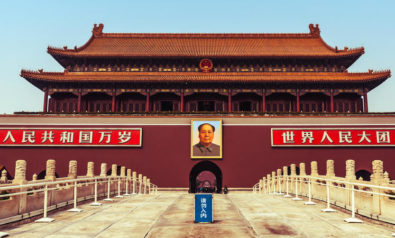






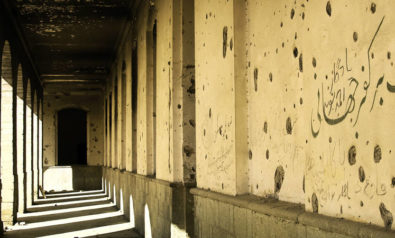

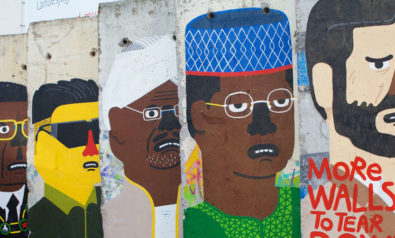
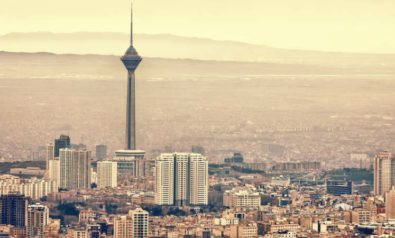
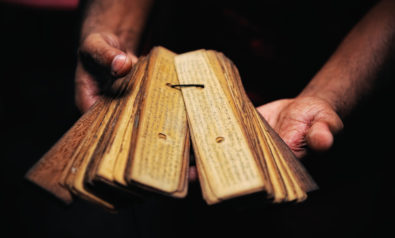

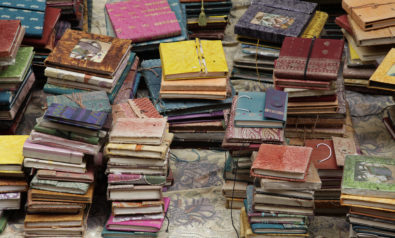


Comment